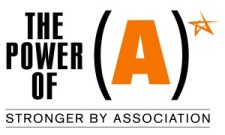Associations don’t have long tails
4 January 2012 Leave a comment
For a while there, Chris Anderson’s book, The Long Tail: Why the Future of Business is Selling Less of More, seemed to dominate the association consulting/seminar/blogging space. Now that its currency has dimmed a little, I have a confession to make. I struggled for a long time trying to like this book1. But in the end, I came to the conclusion that its relevance to associations is, well, short.
Not that Anderson’s thesis isn’t sound. The “long tail” he describes has to do with a retail strategy executed with enormous success by Amazon and Netflix, among others. The traditional retailing approach is to reserve your limited shelf space (whether in a brick and mortar store or a virtual space) for large quantities of whatever is currently hot. Profitability is achieved by selling lots of copies of a relatively few, in-demand items. By contrast, in a long tail strategy, you focus on stocking a few copies of a large variety of items. Your inventory is shallow but wide, as opposed to deep but narrow. It is a strategy based on having enough different things on hand that you will undoubtedly have something that will be of interest to whoever comes shopping, rather than successfully predicting the few things that lots of people will want to buy.
 As the graphic indicates, you end up with the same volume of sales. (The area in yellow is equal to the area in green.) You aggregate a large number of small, specialty markets into a sustainable customer base.
As the graphic indicates, you end up with the same volume of sales. (The area in yellow is equal to the area in green.) You aggregate a large number of small, specialty markets into a sustainable customer base.
Fair enough. And as a consumer with tastes in music, literature and movies that are decidedly not in the bestseller/widely popular category (five hour long, expressionistic productions of German opera, anyone?), an appreciation of the value of niche markets works to my advantage.
But associations are the antithesis of the retail model that Anderson is focusing on. They aren’t predicated on defining a product or service mix attractive enough to build a large enough customer base from the general population to achieve profitable economies of scale. Associations start with a potential customer base already defined by narrow and more limited interests: a specific trade, profession or cause. The populations that we, as association professionals, are trying to make into an economically sustainable market for products and services are already a subset, and sometimes a very narrowly defined subset, of the general population to begin with. Within that already narrow segment along the power curve, can we possibly hope to build a sustainable model predicated on offering whatever any member might want, even if no other member does? We enter the game far to the right of that power curve (in the yellow area): how long a tail can we hope to build from there?
Anderson’s Long Tail was a healthy antidote to the reductive nature of mass market retail thinking, which is all about getting to the lowest common denominator. Mass market retail isn’t about giving the customer what he or she wants – it’s about diluting the offering until it gives just enough of something that a large number of people will want it. No one gets exactly what he or she was actually looking for; everyone gets just enough to make the sale.
And that is a lesson that associations would do well to take seriously. We can’t build successful organizations with offerings that excite and delight no one but are mildly interesting to all.
But associations are not mass markets to begin with. We exist to serve unique, niche markets. And that raises the stakes on getting the product and service mix, the value proposition, exactly right. We don’t have the luxury of a long tail.
1 I liked Anderson’s next book, Free, much better, and in fact did a presentation on it which can be found here: https://markjgolden.files.wordpress.com/2012/01/free.pdf.

